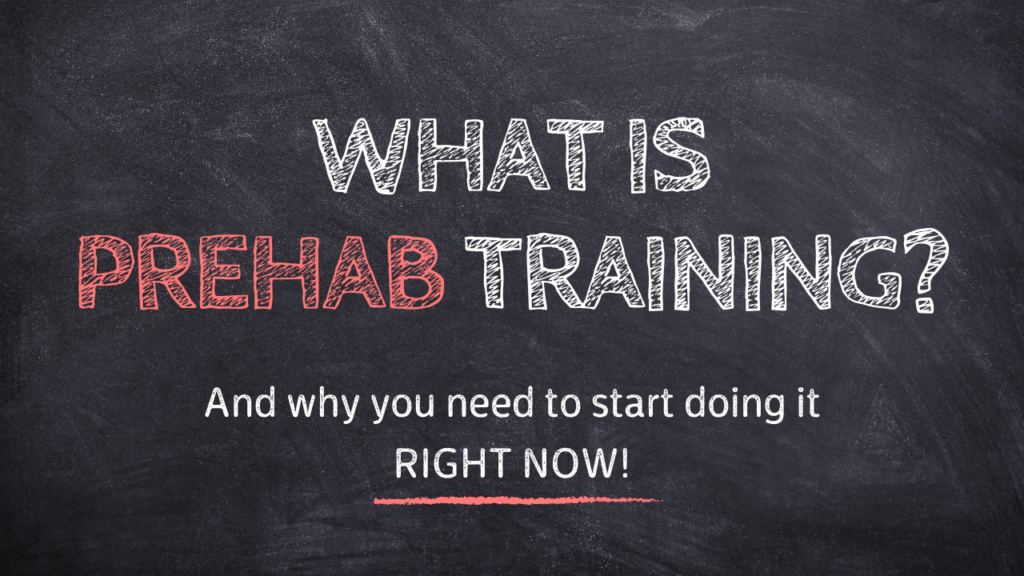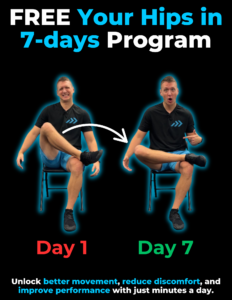What is Prehab Training? Are you tired of dealing with nagging injuries that sideline your progress and hinder your performance? It’s time to consider prehab training—a proactive approach to preventing injuries and maintaining optimal muscle and joint health. In this blog, we’ll explore what prehab training is, why it’s crucial for your well-being, and how it can help you prevent common injuries and strengthen weaknesses before they become problematic. So, let’s dive in and discover why you need to start prehab training right now!
Understanding Prehab Training
Prehabilitation, or prehab training, refers to a proactive approach to injury prevention that focuses on strengthening muscles and improving joint mechanics before an injury occurs. Unlike traditional rehabilitation, which aims to restore function after an injury has occurred, prehab training is about addressing potential weaknesses and imbalances in the body to prevent injuries from happening in the first place.
When our joints lack mobility and proper function, it can lead to stiffness, aches, pains, and even injuries. Think of your joints as the hinges on a door—if they’re stiff and don’t move well, it can make even simple tasks feel like a struggle. This lack of mobility can cause discomfort and make everyday movements challenging. Moreover, when our joints don’t move correctly, it puts added stress on surrounding muscles and ligaments, increasing the risk of strains, sprains, and other injuries. That’s where prehab training comes in—it’s like giving your body a tune-up before hitting the road. By focusing on exercises that improve joint mobility, stability, and strength, prehab training helps prevent injuries before they occur, ensuring that your body can move with ease and resilience, both in daily life and during physical activities.
Prehab training is essentially a proactive approach to exercise, aimed at preventing injuries before they happen. By focusing on mobility, stability, and strength, prehab exercises help you maintain peak performance and resilience, ensuring you can function optimally without the setbacks of potential injuries.
Importance of Rehab-Based Exercises and Stretches
One of the key components of prehab training is the inclusion of rehab-based exercises and stretches. These exercises target common areas of weakness and dysfunction, helping to improve muscle imbalances and joint mechanics. By addressing these issues before they become problematic, you can reduce the risk of injury and maintain optimal muscle and joint health.
Imagine this: You decide to pick up pickleball, but soon after, you start experiencing elbow or even knee pain. What went wrong? If your mobility and stability aren’t where they should be, adding new activities or extra weight in the gym can strain your body. That’s why integrating rehab exercises into your fitness routine is essential—it’s like having insurance against injuries. Life and activities can throw unexpected challenges at us. The better you can move and control your muscles and joints, the more confidently you can navigate whatever comes your way.
Are you curious about what prehab training looks like? Here’s a Rotator Cuff Prehab routine I commonly prescribe to my patients. It’s been helpful for those with a history of rotator cuff or shoulder impingement problems. It only takes minutes to prime your shoulders for the day or as a warm-up before a workout.
Benefits of Prehab Training
1. Injury Prevention
Prehab training helps identify and address potential weaknesses and imbalances in the body, reducing the risk of injuries caused by poor biomechanics (movement). By strengthening muscles and improving joint mechanics, you can move more efficiently and with less strain on your body, lowering the likelihood of sprains, strains, and other common injuries.
Consider this: if your mobility and stability around a joint are lacking, what might happen if that joint moves beyond its safe range or loses control? That’s why it’s crucial to train both mobility and stability (the 2 main pillars of prehab training), helping your nervous system adapt and control these ranges effectively. Life and sports can throw curveballs our way. The better you can move and control your joint motion, the better prepared your body will be for whatever challenges come your way.
2. Improved Muscle and Joint Health
Maintaining good muscle and joint health is essential for overall well-being and performance. Prehab training helps strengthen muscles, improve stability, and enhance joint mobility, all of which contribute to healthier and more resilient muscles and joints. By addressing weaknesses and imbalances before they become problematic, you can prevent the development of chronic pain and dysfunction.
3. Enhanced Performance
In addition to preventing injuries, prehab training can also enhance athletic performance and movement quality. By improving muscle strength, stability, and joint mechanics, you can perform exercises and activities with greater ease and effectiveness. Whether you’re an athlete looking to optimize performance or someone simply striving to move and feel better, prehab training can help you reach your goals.
How to Start Prehab Training
1. Assess Weaknesses and Imbalances
Begin by assessing your current movement patterns and identifying any weaknesses or imbalances that may be present. This may involve working with a qualified movement professional (physical therapist or sports chiropractor) to conduct a movement assessment and develop a personalized prehab program.
Suppose you’re aware of specific areas like hip flexors, hamstrings, or rotator cuff that are limiting your movement and function. In that case, I have ready-made prehab (or Reset) programs available for you to begin right away! Created for my patients to continue their progress beyond rehabilitation, these programs are now accessible to everyone. We’ve witnessed remarkable results, and now I’m excited to offer these programs at a fraction of the cost of an in-person or online expert consultation!
2. Focus on Rehab-Based Exercises
Incorporate rehab-based exercises and stretches into your routine to address areas of weakness and dysfunction. Focus on exercises that target common problem areas, such as the hips, shoulders, and core, and perform them regularly to strengthen weak muscles and improve joint mechanics.
3. Maintain Consistency
Consistency is key when it comes to prehab training. Aim to incorporate prehab exercises and stretches into your routine on a regular basis, ideally at least 2-4 times per week. Over time, consistent practice will lead to noticeable improvements in your muscle and joint health, reducing the risk of injuries and improving overall performance.
Conclusion
Prehab training is a proactive approach to injury prevention that focuses on strengthening muscles and improving joint mechanics before an injury occurs. By addressing potential weaknesses and imbalances in the body, prehab training can help you prevent injuries, maintain optimal muscle and joint health, and enhance athletic performance. Whether you’re an athlete or someone simply looking to stay active and pain-free, prehab training is a valuable tool for improving overall well-being and quality of life. So, don’t wait any longer—start incorporating prehab training into your routine today and experience the transformative benefits for yourself!
Need a consistent plan for Prehab Training?
Do you know you need to add prehab training to your routine, but you don’t know where to start? Don’t worry, I have you covered! That is exactly why I created the Mobility Suite App so you can start prehab and mobility training for a fraction of the price of seeing a physical therapist and/or sports chiropractor!
I’ve created a library of prehab and mobility training programs (from hip mobility to anterior pelvic tilt correction) that you can have on-demand access to. These programs were carefully crafted to help you get the most out of prehab and mobility training with only minutes of work per training session! Less is more with prehab training. The most important thing is consistency! So, if you need a consistent strategy, start your FREE 7-day trial to my Mobility Suite App!
Why offer a 7-day free trial? I firmly adhere to the “1-week rule.” If you commit to consistent mobility training for one week, you’ll gather enough data to determine if it’s right for you. I’m confident that these programs will benefit you, and I want to give you the chance to experience it firsthand, completely free for one week. This way, you can determine whether mobility training aligns with your goals and needs without any financial commitment!
You have nothing to lose but stiff joints and muscle aches. Don’t let discomfort hold you back any longer— tap/click the button below to join today and take the first step toward a more mobile and pain-free lifestyle!







